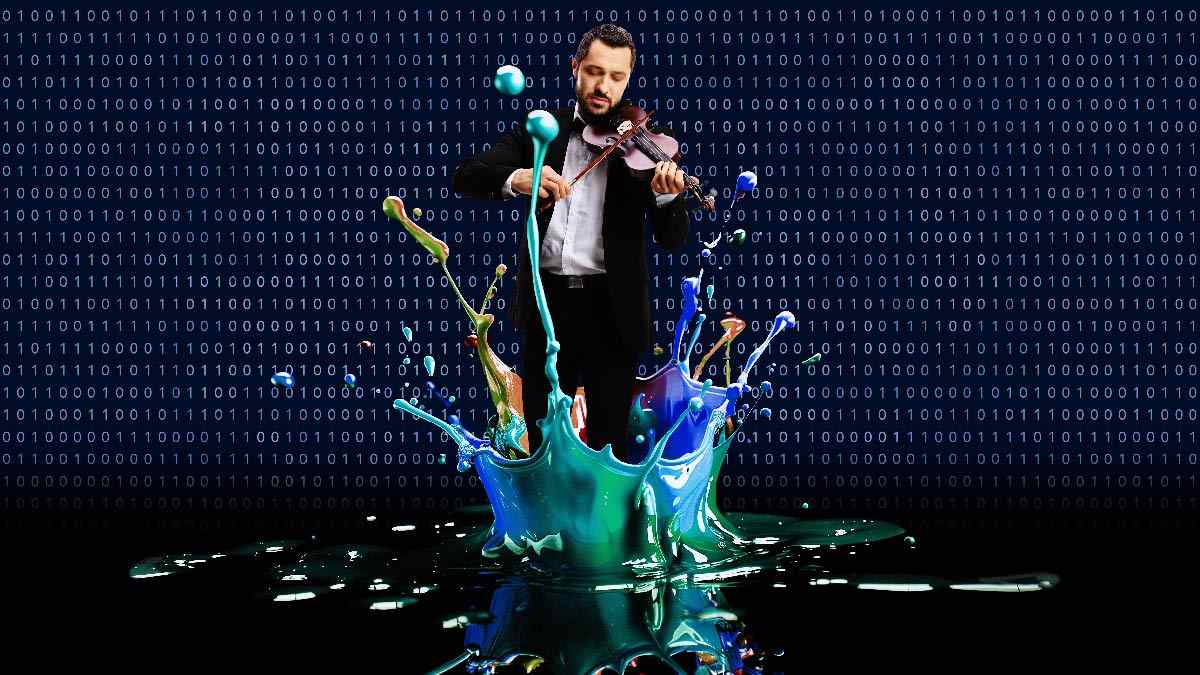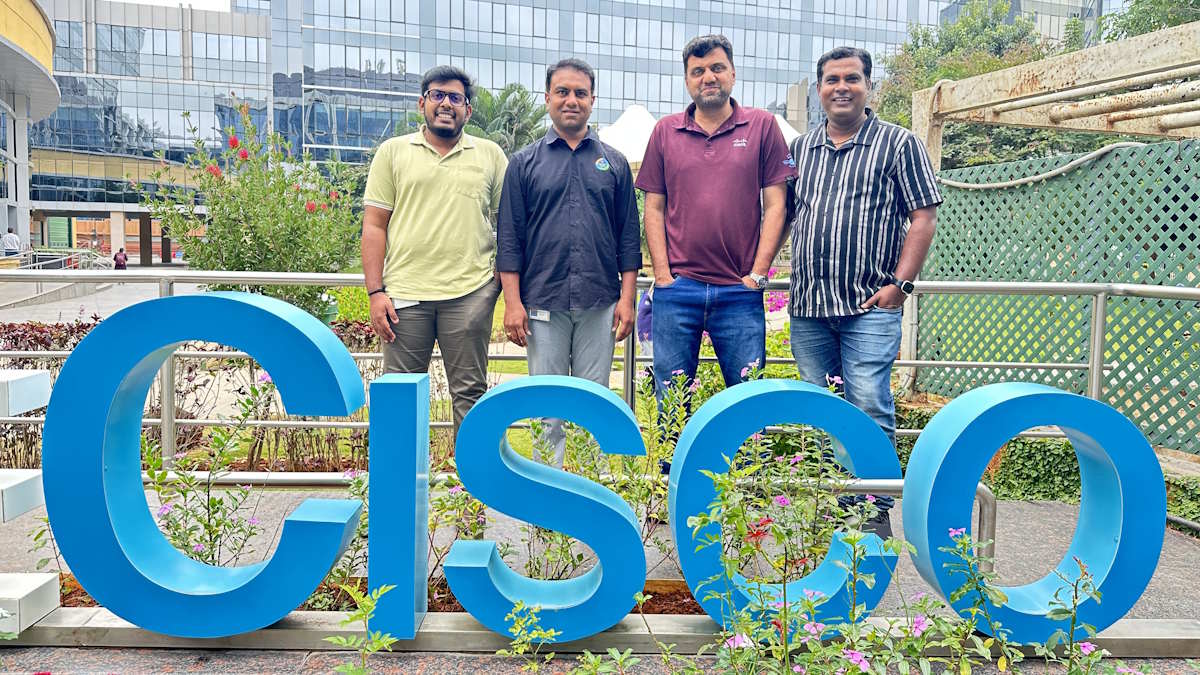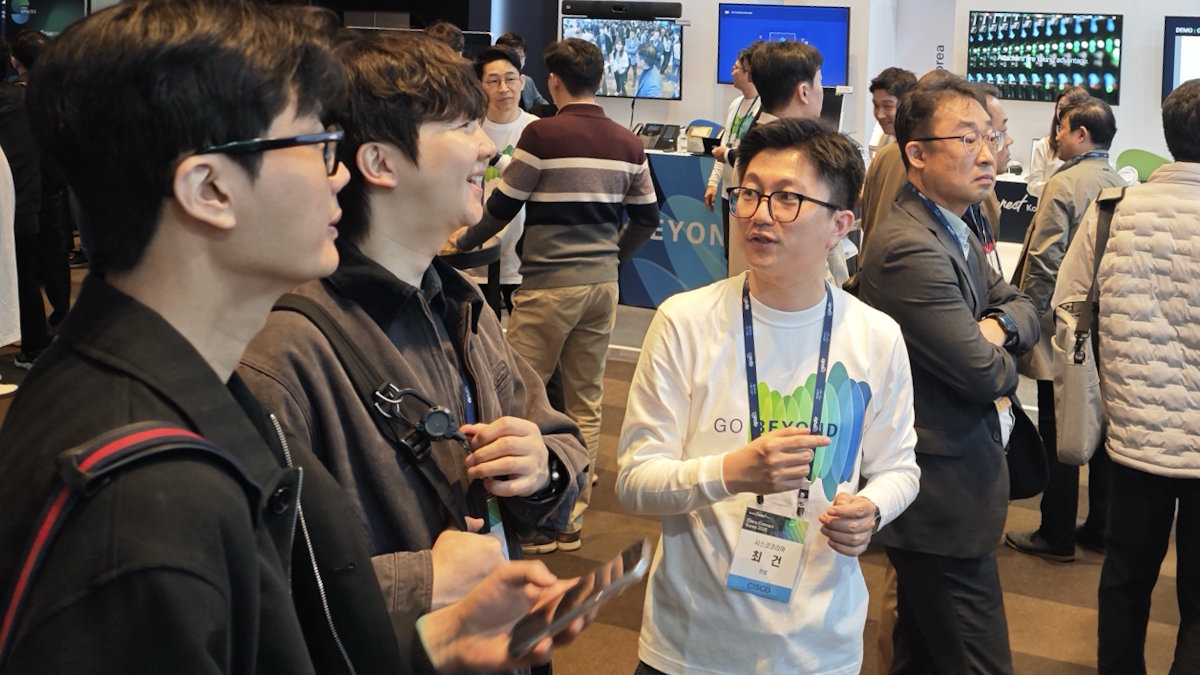Einstein made music. Pasteur painted. Actress Hedy Lamarr’s homing torpedo led to WiFi. And college dropout Steve Jobs credited a calligraphy course for inspiring the Mac.
In short, art and science have never been far apart. And today’s technology needs the creative spark more than ever.
That’s why the best organizations benefit from the out-of-the-box, right-brain thinking that artistic minds bring to the table — to solve problems in unique ways, collaborate with imaginative flair, and add elegance and empathy to user experiences.
Cisco is no exception.
We spoke with some top Cisco leaders whose creative sides uplevel their everyday work: CIO Fletcher Previn, with a background in TV and movies; Denise Lee, whose lifelong devotion to classical ballet influences her role as VP for Cisco's Engineering Sustainability Office; Thimaya Subaiya, who shapes wood into beautiful furniture when not focused on securing and streamlining Cisco as EVP of operations; and Stephen DiAdamo, whose passion for the violin compliments his work advancing the quantum networks of the future.
All believe the arts have played a big role in their career success. Because as Previn put it, “Technology done well is a creative endeavor.”
And when your dad is the composer and pianist Andre Previn and your mom is actress Mia Farrow, creativity is in your DNA. So, it’s no surprise that Previn’s early calling was TV and movies. He interned on movie sets and on the David Letterman and Conan O’Brien shows. But when his other love — technology — began to override even the excitement of late-night television, his career took a turn.
“Technology was my hobby, and then it became my profession,” he recounted. “And I hope the creative part comes through in really caring about the impact technology's having on people — and the role that technology plays in how work gets done.”
Since the best art often expresses empathy and emotional depth, Previn also cites it as an inspiration in his leadership style.
“I try to bring that creativity to the job and lead with empathy and experience,” he stressed. “Everything else has a way of falling into place when you make sure that you're leading with design and experience, with a goal of making things simpler for people.”
Quantum violin/sustainable ballet
Creativity has played a big role in Stephen DiAdamo’s work in tech, from completing a PHD to his current role developing quantum networking for Cisco. A serious amateur, he has played violin in local Munich orchestras and follows a rigorous practice schedule, always striving for a deeper understanding of each piece.
“When you're doing mathematics and simulations, thinking logically all the time, you need to activate that creative side of your brain,” DiAdamo explained, “to see things in a different way. And you can play the same piece for 10 years, and still learn new things, little things that make a big difference. I applied those learnings to my PHD studies and my work today.”
Denise Lee has been in dance studios since age two and was deeply involved in classical ballet studies through college — where she also taught dance as a side gig — and beyond. Today she helps coach two very special ballet students: her daughters.
“I knew I was never going to be professional, “Lee said, “but It’s always been an outlet and remains a big part of my life. And even before working at Cisco, I valued the opportunity to put so much rigor and discipline into a space that uses a completely different side of the brain.”
Lee sees a connection between the intense demands of classical ballet — all devoted to creating something that appears beautiful and effortless — and technology. The best products, she believes, offer a seamless, elegant experience, no matter how complex the underlying technology. And as head of sustainability engineering for Cisco, she’s also committed to technology that serves a higher purpose, as great art often does.
“The best art is about being emotive and creating a feeling or a movement or an impact in someone,” she emphasized. “And technology should be the same. Whether in its simplicity or its ease or in its overall optimization of something in your life — making it faster, easier, cheaper, more sustainable — if it isn’t creating a sense of joy or purpose, it’s missing the point.”
Leadership and design, with empathy
For Thimaya Subaiya, the art of woodworking brings a more expansive perspective to his leadership role at Cisco. The almost meditative nature of woodworking, he says, enables him to clear his head, far from the fast-paced world of work — and return to a problem with a fresh perspective.
“When you’re meticulously sanding an entire table that you’ve been working on for a long time, you’re in your own world,” he said. “Especially if you are working in an environment surrounded by people all the time, it’s just a moment of quiet time dedicated to yourself. I think that's another critical piece, outside of work and family, that we need to focus on. To help maintain that sense of balance.”
One lesson he’s learned is that, while striving for perfection in art or technology is a noble goal, it’s rarely reachable. But striving for empathy and practical solutions is.
“In my woodworking, I strive for perfection,” Subaiya admitted. “But when I'm done with a project, I’m often unhappy about something like a small scratch that only I notice.”
In that sense, Subaiya believes that woodworking has helped him as a leader. The commitment to perfection remains, but he’s gained a more balanced view of what’s attainable.
“I find that a team can be more agile and creative when that pressure for perfection is mitigated across the board,” he added. “It’s about bringing the right balance between practicality and empathy to any given planning meeting or product build.”
Even if it’s ultimately unobtainable, all agreed that the perfection expressed in timeless art unites us as humans — and can inspire us to aim for great things.
“In the end, that striving for the ideal is what art is about,” Lee emphasized. “Even if nothing is truly perfect, there’s so much enjoyment in that process, and so much value.”
DiAdamo believes the human creative process will always have a place in tech, even in the age of Gen AI.
“As hard as it is technically to play the notes in a musical piece,” he concluded, “bringing out the emotion in the music is the hardest part. And developing software demands a lot of empathy, too, to ensure that users have the best experience. We’ll always need the human aspect to bring emotion out of the art. In tech, it’s the same.”





